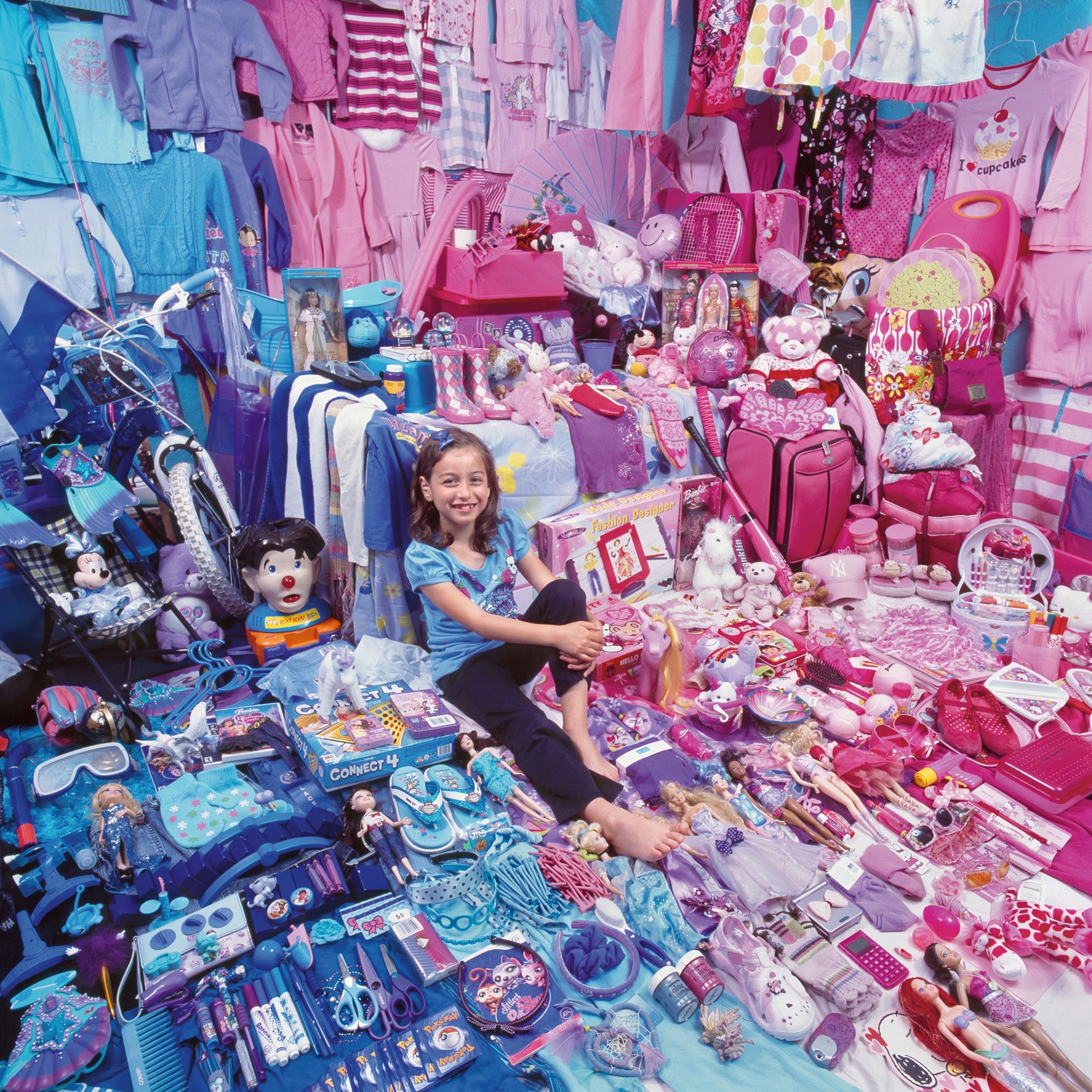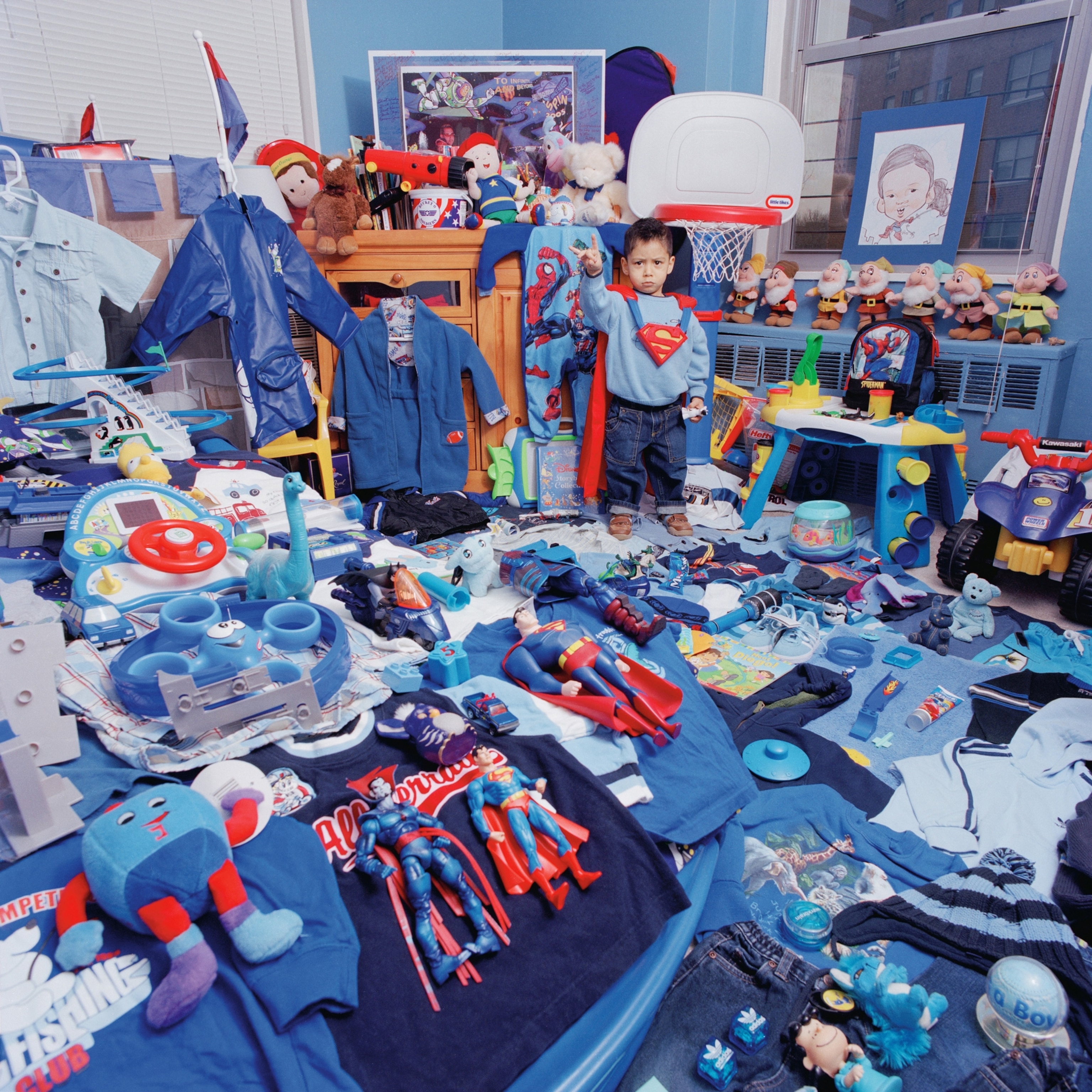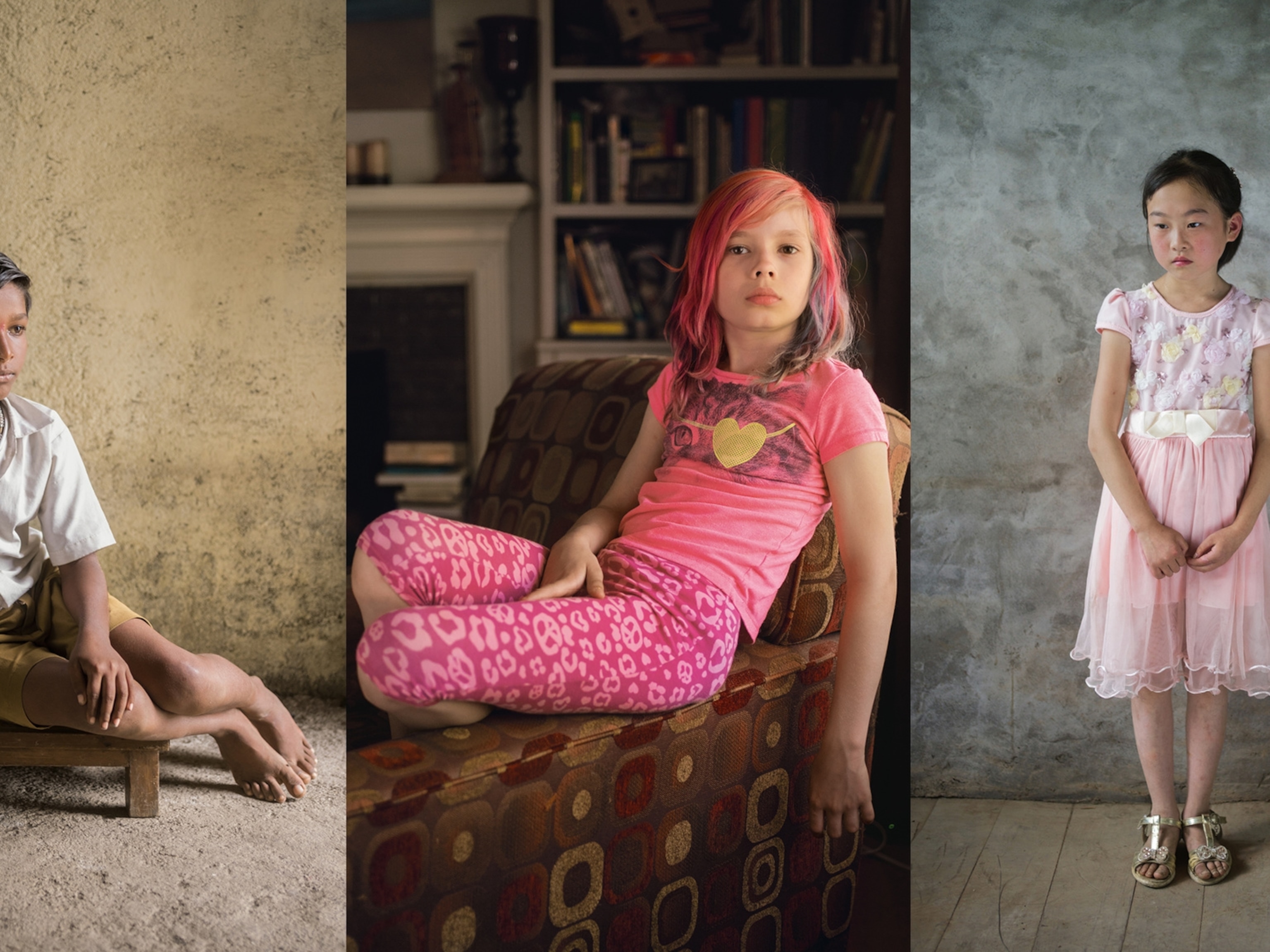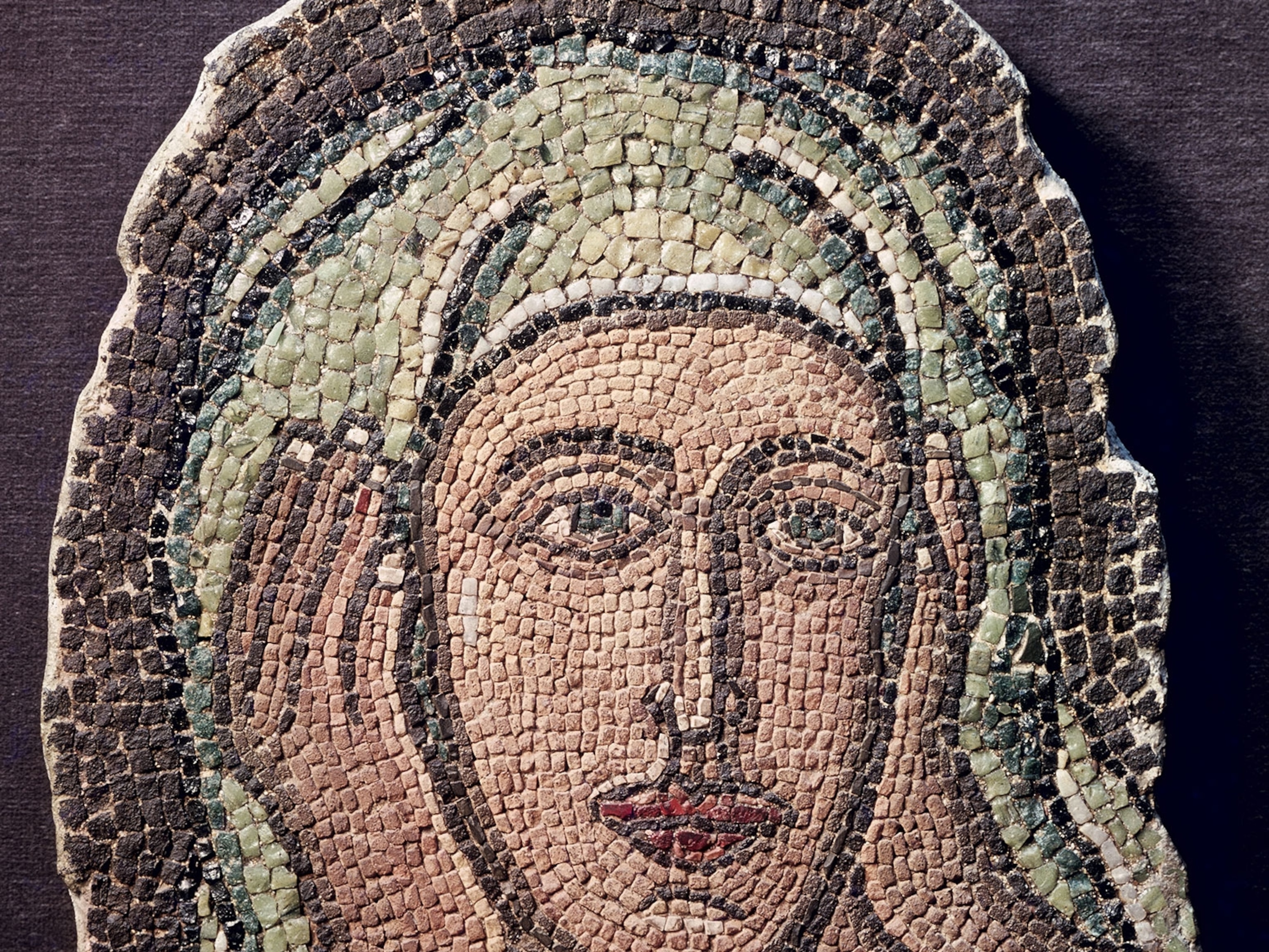Pink and Blue: Coloring Inside the Lines of Gender
Fascinated by her daughter’s early obsession with pink, a photographer explores the two hues’ influences in children’s lives.


When JeongMee Yoon’s daughter was five, she wanted to wear only pink. Yoon, a South Korean photographer, knew that her child’s preference was shared by legions of young girls. But she was so intrigued by that seemingly universal inclination that she began the “Pink and Blue Project,” an ongoing photographic series of the two colors that are most frequently associated with girls and boys worldwide.
“I wanted to show the extent to which children and their parents, knowingly or unknowingly, are influenced by advertising and popular culture,” Yoon says. “Blue has become a symbol of strength and masculinity, while pink symbolizes sweetness and femininity.”

Linking gender with these colors is relatively recent, according to Jo Paoletti, a University of Maryland American studies professor. In the 19th century pastel colors were fashionable in most of Europe and the United States and were worn “to flatter the complexion, not denote gender,” she says. In the early part of the 20th century, gender distinction in clothing hues began to emerge, she says—and by 1940 pink and blue took root as the intensely gender-associated colors they continue to be today.
The United States has contributed significantly to the “pink for girls and blue for boys” phenomenon, says Paoletti. It’s been fueled by the pervasive color palettes of Barbie, superhero movies, and other staples of American childhood, she says. And it has had the same kind of cultural staying power as “traditional ideas about sex, gender, and sexuality.”
Since Yoon began her “Pink and Blue Project” in 2005, she has observed that children’s color tastes often shift as they age, typically around third or fourth grade. For example, when Yoon photographed Maia (above) at age eight in her home in Hempstead, New York, the girl was beginning to gravitate away from pink and toward other colors, including purple.







